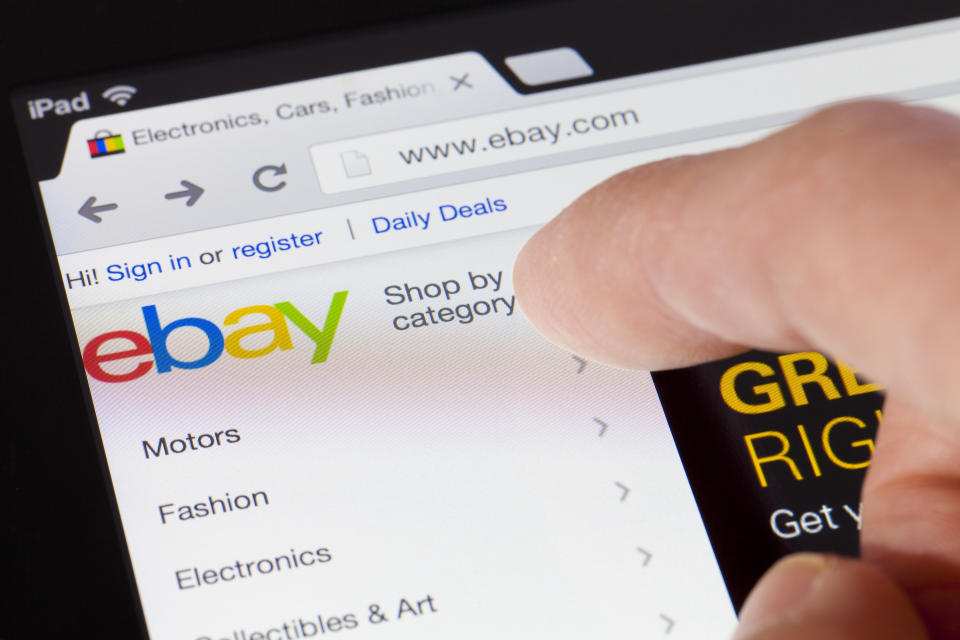Top tips for shopping online marketplaces for back-to-school and remote work supplies
The early days of the pandemic put an urgency in Americans to buy home gym equipment and video games to help pass the time. Now as COVID-19 remains an everyday presence in the country, people are outfitting their homes to foster learning and productivity.
Searches and purchases for remote learning and working essentials like desks, webcams, and printers were up as much as 200% from July to August compared with the previous year, according to data from OfferUp, an online peer-to-peer marketplace.
The run on goods caused by quarantine measures has sent the retail supply chain into overload with Americans turning to secondary markets, or ‘re-commerce,’ the portmanteau of recycling and e-commerce.

“More and more people are turning to retail marketplaces like OfferUp to buy things that they really need,” Nick Huzar, CEO and co-founder of OfferUp told Cashay. “Especially when a lot of traditional retail channels just aren't aren't available to people.”
The economic impact of COVID-19 has caused individuals and families to hit the second-hand market out of practicality and financial necessity. Part of the attraction of the resale market is its deals and immediacy. There’s also the fringe benefits like the opportunity of giving an item a second (or third) life to prevent it from going to a landfill. Often, there’s no assembly required, either, another plus.
In the summer months, it became clear that the virus wasn’t going anywhere and parents noticed. When the reality of remote learning set in as more than a stopgap measure, parents started searching for ways to incorporate learning tools and spaces — but on the cheap, Huzar said.
How to safely shop an online marketplace
There’s a risk associated with buying second-hand or refurbished items that aren’t associated with buying retail.
To help mitigate the risks of being conned or taken advantage of by a buyer, Huzar offers up the old adage: “If something’s too good to be true, it probably is.”
When brokering the deal, use the time to ask the seller pertinent questions. If the item comes with a product warranty, ask if it’s current or eligible to be transferred to a secondary owner. Ask about previous damage or repairs to help you assess the item’s condition.
As for pricing, use the retail price as a benchmark for how much you should pay. Seeing a brand-new item being offered for 70% or more off of the retail price should raise red flags.
Use the encounter to test that a tech device powers up or make sure a garment or piece of furniture doesn’t have obvious pet or smoke odors that could irritate allergies. “Use sound judgment” when meeting face to face, Huzar said.
Where to shop

The digital age has provided ample opportunities to find deals, but each of the heavy-hitters comes with its own set of pros and cons.
Reaching a wide audience, Facebook Marketplace is free to post, but sellers must pay to boost a product’s exposure. Buyer and seller communicate through Facebook Messanger to negotiate price and meet-up.
Letgo is an app-based platform that allows users to filter by geographic range and items. It’s free to post, however, sellers have the option to pay a premium for advertising. There’s no commission taken by the company, and buyers are provided item protection.
Buyer and seller text through the app and arrange a price and meet-up.
OfferUp gives shoppers the benefit of both local and far-fetched sales as there’s the optionality to meet up in-person or opting to have an item mailed to you. Sellers only pay a service fee for shipped transactions.
The elder statesman of marketplaces, Craigslist has been eclipsed by newer and flashier marketplaces, but it’s still around and thriving.
It’s free to post, there’s no commission taken from your transaction, and you’ll communicate with the buyer or seller to coordinate the transfer of goods. Craigslist has a very hands-off approach to transactions; if something goes awry — like receiving counterfeit currency or a faulty product — you likely won’t receive much help from the Craigslist team.
Mercari boasts a wide variety of products from apparel to sporting goods. Different from other marketplaces, there are no meet-ups with Mercari. Instead, your item arrives by mail.
In exchange for your delayed gratification, the company offers a money-back guarantee in case your item isn’t as described. You’re also not beholden to your geographic location as items can come from anywhere in the U.S.
Sellers pay a 10% commission and buyers are subject to shipping fees.
eBay is home to more than second-hand items and you’ll stand to find new items as well. All transactions are completed via mail with the seller paying a commission or fee to Ebay.
Stephanie is a reporter for Yahoo Money and Cashay, a new personal finance website. She can be reached at stephanie.asymkos@yahoofinance.com. Follow her on Twitter @SJAsymkos.
Read more information and tips in our Family section






